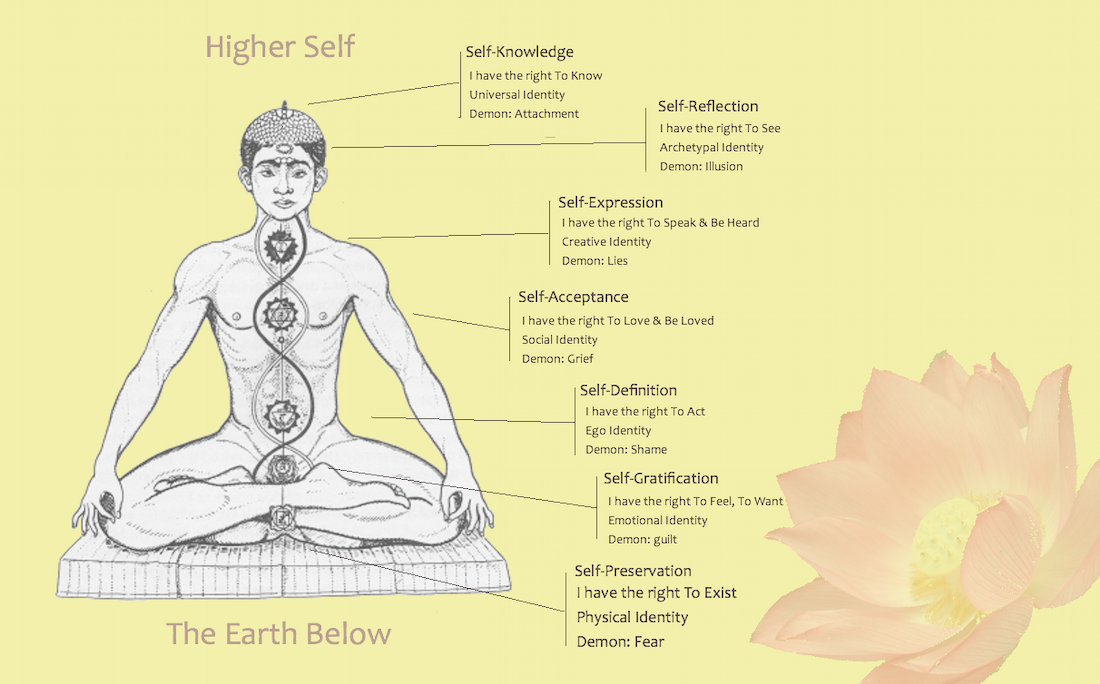
*Elephant is not your doctor or hospital. Our lawyers would say “this web site is not designed to, and should not be construed to provide medical advice, professional diagnosis, opinion or treatment to you or any other individual, and is not intended as a substitute for medical or professional care and treatment. Always consult a health professional before trying out new home therapies or changing your diet.” But we can’t afford lawyers, and you knew all that. ~ Ed.
~
“Love yourself. Love your soul and let go of the past. Past pain is keeping you in pain.” ~ Yogi Bhajan
~
Addiction is a broad term. We often think the “rock bottom” drug addicts and alcoholics are in need of real help. The thing is, there are plenty of addicts who fall under the radar all the time. There are people addicted to health if you can believe it.
The term addiction in basic terms is the uncontrollable compulsion to do something. It is usually triggered by memories that bring on the emotional response of (fill in your compulsion here). There are dry addictions like shopping, overeating, and even something like social media (Instagram or Facebook).
Buzzwords in addiction include emotions, behaviors, trauma, physiological, psychological, and on it goes. There are different reasons we become addicted. It can start as a habit and after going through something traumatic, it can morph into emotional and physical dependency. We can be more susceptible to addiction due to family bloodlines. It might be our surroundings or due to your need to numb yourself.
If you have a mood disorder like depression or anxiety, you’re more at risk of developing an addiction.
So here we are, relying on our “objects of addiction” to make us feel better. We feel lost in the world or afraid. Substances or outcomes from our behaviors make us feel less afraid or outright comatose. Whatever brought us to addiction, it can become challenging to untangle ourselves. I practice Kundalini yoga and the changes I have seen in myself make me a believer that it is a powerful way to help get past addiction.
Yoga as a Tool for Getting Past Addiction
In the deep well of addiction, it takes various methods to really get past it. It is so multifaceted. In an addiction program, yoga will often be used as one of the therapies.
Yoga hasn’t been scientifically proven to directly aid in overcoming addiction. However, mindfulness, and its positive effects with addiction recovery, has been studied extensively for the past 30 years. The conclusion is that mindfulness-based treatments have shown to produce positive effects such as short and long-term reductions in cravings and addictive behaviors. The ancient sages of yoga will tell you that yoga was developed to make it easier to reach the state of mind to heal all wounds. Mindfulness.
In more modern terms, yoga and mindfulness emphasize a healthier way to cope with triggers and deal with emotions you may have been avoiding. Personally, I have found that Kundalini yoga slaps all your truths right in the face. Your pain is fully revealed, and you can lean into it as you are going through a kriya that lasts for minutes at a time. When you’re in the middle of an exercise that seems physically impossible, you can let your mind take over and make the experience worse. Alternatively, you can let go of the ego-mind and accept the discomfort.
Understanding this in Kundalini was like a lightbulb going off in my head. Utilizing this knowledge in my real life came easily after figuring out that things are less painful when you can see them outside of the ego-mind.
My Journey with Kundalini Yoga
I had patterns of thought that would creep in and cause certain reactions, behaviors, and compulsions. I knew they weren’t good for me but I was powerless to stop them. I despised myself for not having control, which of course just made me continue the behaviors. Through the daily practice of Kundalini, I slowly felt those layers disappear. There was physical pain I had to break through and there were tears. It was hard and I sometimes cursed the challenges of the poses.
Then, there were breakthroughs. The physical pain stopped, and I was able to tap into my higher self. The higher self, also known as the witness, is the conscious part of you who looks down on the ego. The ego, of course, being the source of all our problems.
Osho says there are no problems in life. We create problems but they don’t exist unless you make them, which is an ego-based activity. When you practice something powerful like Kundalini, you can’t help but tap into the higher part of yourself. As you go through physically challenging kriyas, your ego will be yelling in your head that this is the stupidest thing you’ve ever done. The part that is hearing that yelling is your higher consciousness. The true you.
When a person goes through rehab, it starts with dissolving the physical dependency through detox. However, any addiction specialist will tell you this is often not enough. You must also tend to the psychological reasons why you would begin abusing drugs or alcohol. Dry addictions such as overeating are often related to emotions as well. It is imperative to look within and acknowledge the reasons for your abuse and ultimately your addiction.
In Kundalini yoga, it is explained like this:
When we’re in physical, mental, or emotional pain, we often look for outside sources to relieve the pain. These things we do can easily manifest into an addiction. We often see addiction as smoking or drinking but it’s a sneaky thing that can disguise itself in “acceptable methods of numbing or gratification.” We can also become addicted to being accepted, getting further in our careers, or even have an addiction to romantic love.
Kundalini yoga and its meditative practices are effective in helping to change habits and behaviors. You don’t mask your pain—instead, it helps you to reveal the pain and then release it. I have been in the middle of doing a kriya, or practice, and suddenly, tears are rolling down my face. I feel emotional pain coming all the way up from my root and then the pain stops once the tears roll. If you get into the swing of this powerful practice, you will literally feel that energy going up your spine and out of the top of your head.
The Power of Kundalini Yoga to Get You There
When Yogi Bhajan explained Kundalini yoga to students, he said quite simply that all yoga disciplines are aimed at accomplishing one thing—to raise awareness. To do this, you must raise your Kundalini energy. This is something that is done in every style of yoga practice. It doesn’t matter if it’s Hatha, Vinyasa, Shakti, Raja, Ashtanga, etc. Techniques are similar in raising the Kundalini, which allows us to be in our higher seat of consciousness. That is where our power lies against addiction.
This is the part of us that has no cravings. It can see the ego for what it is and just observe. It’s that meditative state where we are untouched. The difference with Kundalini yoga is that we’re flying to the destination as opposed to walking, going by horseback, or driving. It gets us there faster with intensive kriyas.
Letting Your Higher Self Help You
That higher self can stop us from having that drink. It can stop us from people-pleasing to our own detriment. Our higher self is our true self and it makes decisions for the greater good.
The ego is kind of like a child in our brain while the higher self is the all-knowing adult. To sit in this part of our mind gives us a greater ability to see the underlying feeling that causes the compulsions. Exploring the feeling of a trigger when it surprises us instead of reacting to it allows us to change our behaviors. Behavioral therapy is also an important step in addiction rehabilitation.
Revealing Repressed Emotions
Kundalini can bring those repressed emotions to the surface. The emotional scars that exist in us are a major contributor to addiction. We often look to yogis in a stigmatic way, as if they have abolished all problems in their life. This, of course, is not true. We all have problems and many times we reach out to spiritual practices to better deal with our real life.
It’s important that if you are suffering from addiction to get assistance from as many angles as possible. Our emotions are playing a large part in why we can’t stop the pattern. There is a lot to understand and a great deal of effort that needs to take place for this life transformation. The practice of Kundalini can change anyone in a drastic way; it’s highly effective in releasing old emotions that are holding us back.
The first few practices of Kundalini may seem bazaar. This is simply because you’re doing things you’ve never done. This freaks the brain out—it does not fare well with the unknown. I believe that’s also part of what makes this practice so effective.
If you don’t quit when your ego tells you to, it will eventually stop chattering in the background. Then it’s just you contending with your ghosts, your fears, your pain. You have the courage to face them.
Any type of yoga can help with an addiction. That moment when you go to take a bite, a hit, a drink, there is a chance for the pause; to be mindful, to look in, and walk away from the compulsion.
As Yogi Bhajan says, there are many different forms of yoga that can get you to the “promised land” in your mind. It’s just that Kundalini happens to get you there faster. Consider it the airplane option when you want to get somewhere fast (in your life).
~










Read 6 comments and reply